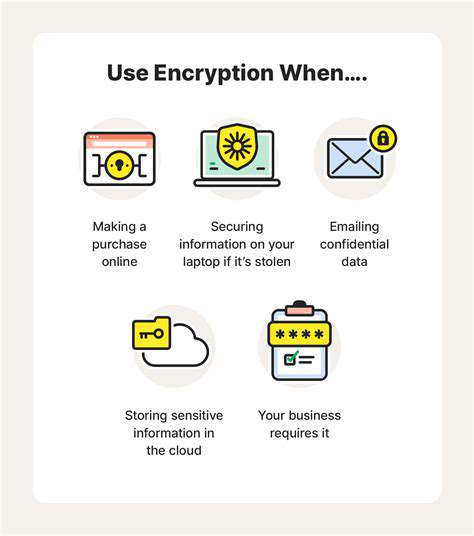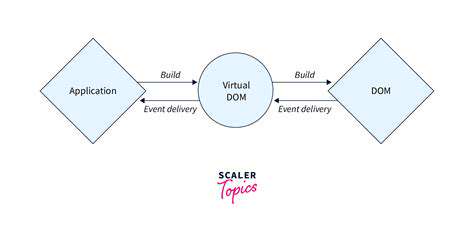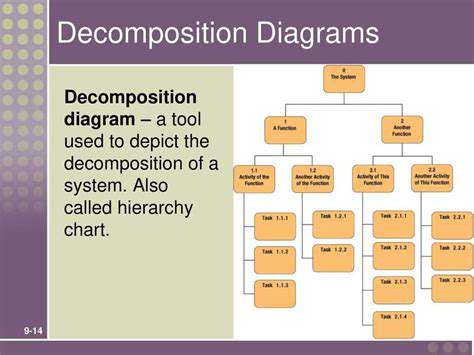What is Encryption and Why is It Important?

Beyond Confidentiality: Encryption's Role in Data Integrity and Authentication
Encryption's Impact on Data Integrity
Data integrity, a crucial aspect of reliable information management, ensures that data remains accurate, complete, and consistent throughout its lifecycle. Encryption plays a pivotal role in safeguarding this integrity. By converting data into an unreadable format, encryption makes it virtually impossible for unauthorized individuals to alter or tamper with the information without detection. This protection extends to preventing accidental corruption or modification, a common risk in data storage and transmission. Robust encryption algorithms ensure that any attempt to modify data results in a noticeable change, alerting the system to potential issues.
Implementing encryption protocols at various stages of data handling, from storage to transmission, reinforces the integrity of the data. This proactive approach minimizes the risk of data breaches and ensures that the information remains trustworthy and dependable for all legitimate users.
Authentication Through Encryption
Encryption is a cornerstone of authentication systems. By encrypting data exchanged between parties, encryption ensures that only authorized users can access and decrypt the information. This process establishes a secure channel for communication and verifies the identity of each participant. A valid decryption key acts as a proof of authenticity, confirming that the recipient is indeed the intended party.
This authentication aspect is critical in preventing impersonation and ensuring that sensitive data is only accessible to those authorized to receive it. The use of encryption for authentication goes beyond simple verification; it establishes a secure foundation for trust within digital interactions.
Encryption and Non-Repudiation
Non-repudiation, the ability to prove the origin and integrity of data, is significantly enhanced by encryption. When data is encrypted, it becomes virtually impossible for the sender to deny having sent it. The encrypted message, along with the digital signature and associated decryption key, acts as irrefutable proof of the transaction. This feature is particularly vital in financial transactions, legal documents, and any sensitive communication where the sender's identity must be verifiable.
Protecting Data in Transit with Encryption
Data in transit is particularly vulnerable to interception and manipulation. Encryption, applied during data transmission, safeguards sensitive information against unauthorized access. This protection is crucial for safeguarding data exchanged across networks, whether it's across a local network, the internet, or a cloud service. Encryption protocols, such as TLS/SSL, are essential for secure online transactions and communications.
Encryption and Secure Data Storage
Data at rest, meaning data stored in databases or other repositories, must also be protected. Encryption provides a robust security layer for data storage. By encrypting data at rest, organizations significantly reduce the risk of unauthorized access even if the storage system is compromised. This proactive measure ensures that sensitive information remains confidential and inaccessible to unauthorized individuals.
The implementation of strong encryption algorithms during data storage is a critical element in safeguarding sensitive data against potential breaches and maintaining data integrity.
The Role of Encryption in Compliance
Many industries and regulations mandate the use of encryption to protect sensitive data. Financial institutions, healthcare providers, and government agencies often face specific compliance requirements that necessitate the use of encryption for data security. Complying with these regulations is not just about meeting legal obligations; it's about demonstrating a commitment to protecting sensitive information and building trust with customers and stakeholders.
Encryption is becoming an essential component of a comprehensive data security strategy, ensuring compliance with evolving industry standards and maintaining a high level of data protection.
Advanced Encryption Techniques and Future Trends
As technology advances, so do the techniques employed in encryption. Researchers constantly explore new and more sophisticated encryption algorithms to address emerging threats. Quantum computing poses a potential challenge to current encryption methods, prompting the development of post-quantum cryptography. This ongoing evolution ensures that encryption remains a powerful tool for protecting data in the face of advancing technologies and threats.
Future trends in encryption will likely focus on greater efficiency, wider applicability across diverse platforms, and enhanced security against sophisticated attacks. This adaptability is crucial for maintaining the integrity and confidentiality of data in the ever-evolving digital landscape.

Read more about What is Encryption and Why is It Important?
Hot Recommendations
- Review: The New [Specific Brand] Smart Lock Is It Secure?
- Best Budget Studio Monitors for Music Production
- Top Flight Simulation Peripherals (Joysticks, Throttles, etc.)
- Top Portable Scanners for Document Management On the Go
- Reviewing the Latest Smart Air Purifiers for Your Home
- Best Portable Photo Printers for Travelers and Memory Keepers
- The Future of Personal Transportation Beyond Cars (Hyperloop, eVTOL)
- Top Network Monitoring Tools [Free & Paid Options]
- Understanding the Tech Behind mRNA Vaccines [A Look Inside]
- Guide to Choosing the Right Gaming Chair for Ergonomics




![Learning Swift for iOS Development [Beginner's Guide]](/static/images/25/2025-06/BuildingYourFirstiOSApp3AASimpleCalculatorExample.jpg)
![How to Use [Software] for Creating Professional eBooks](/static/images/25/2025-07/OptimizingYoureBookforReadabilityandAccessibility.jpg)
![Best Budget Gaming PCs for Esports Titles [High FPS]](/static/images/25/2025-07/ChoosingtheRightComponentsforMaximumPerformanceonaTightBudget.jpg)




